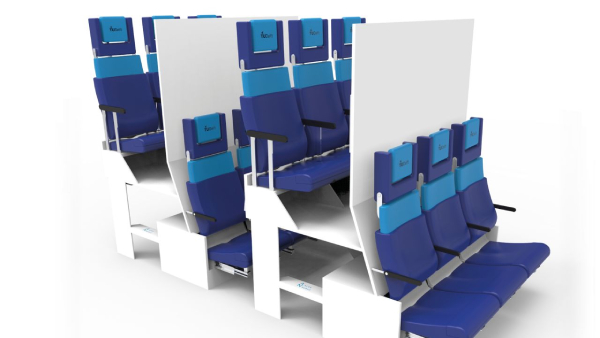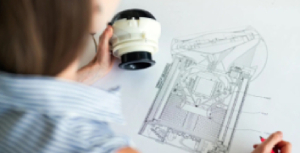
Industrial design is a discipline often perceived as rough and intimidating, perhaps due to the complex interplay of engineering, material science, and aesthetics that it typically entails. This perception, however, overlooks the inherent creativity and innovation that is actually central to the field, where artistry and functionality coexist to create objects that serve practical purposes and enhance lives through their design and usability. It bridges the gap between the abstract beauty of art and the grounded demands of functionality. Through this blend, designers create products that not only meet the practical needs of consumers but also speak to their senses and emotions.
By exploring the symbiotic relationship between art and function, industrial design offers a unique lens through which people can understand and appreciate the objects surrounding the jam. This article invites readers to explore this dynamic field and shed light on how industrial design shapes the physical surroundings and experiences within them.
Cultural Reflections in Design
Industrial design is a canvas for cultural expression that mirrors and shapes societal trends and values. This aspect is particularly prominent in cities like Los Angeles, where the industrial design Los Angeles scene thrives.
Designers incorporate elements that resonate with the local culture, creating functionally relevant and culturally meaningful products. This cultural dimension in industrial design allows for diverse styles and approaches that cater to various tastes and traditions and showcases how design can be a powerful tool for artistic storytelling and community identity.
Aesthetic Value: More than Meets the Eye
In industrial design, aesthetics play a crucial role beyond mere surface appeal. Designers like Jonathan Ive, renowned for his iconic designs at Apple, exemplify how aesthetic considerations are fundamental to a product's functionality. His creations, such as the iPhone and MacBook, showcase a blend of sleek, minimalist beauty with user-centric functionality. These designs look visually appealing and enhance the user experience through their intuitive and ergonomic features, demonstrating the function of aesthetics in industrial design.
Similarly, Philippe Starck's iconic creations, such as the Juicy Salif citrus squeezer, merge unique forms with practical utility, challenging our perceptions of everyday objects. These examples emphasise how aesthetic value in industrial design is not just about looking good; it's about creating a more intuitive and enjoyable user experience.
User Experience: Artful Interaction
And speaking of user experience, this aspect of industrial design focuses on the physical interaction with a product. It concerns how a product feels, operates, and fits into the user's lifestyle. At its core, industrial design is about understanding and anticipating user needs and behaviours, creating intuitive products, and elevating the user's interaction with them. This approach encompasses the art of crafting experiences that resonate on a deeper, more personal level.
Innovation through Creativity
Innovation in industrial design is often born from a blend of creative thinking and technical expertise. Renowned designers like Marc Newson have exemplified this through their work, pushing traditional design boundaries to create something groundbreaking.
Newson's approach to design is not confined by conventional practices but is driven by a desire to explore new materials, forms, and functions. This kind of innovation sets industrial design apart—it's not just about solving problems but about reimagining how we interact with the world around us, turning everyday items into works of functional art.
Sustainability: Ethical Artistic Design

Sustainability in industrial design merges the art of creation with the ethics of environmental consciousness. Designers like James Dyson have been at the forefront of this movement, crafting innovative products and being mindful of their ecological impact.
Dyson's line of bagless vacuum cleaners revolutionised home cleaning with their superior suction technology and reduced the environmental waste associated with disposable vacuum bags. This demonstrates a commitment to sustainability and balances high-performance product design with eco-friendly considerations.
This design approach also considers a product's entire lifecycle, from its materials and manufacturing processes to its longevity and recyclability. By prioritising sustainability, industrial designers exemplify how art and ethics can coalesce to create products that are not only aesthetically pleasing but also responsible and forward-thinking.
Emotional and Narrative Impact
Through thoughtful design, industrial design products can evoke a range of emotions and tell compelling stories. This aspect of design touches upon the emotional connections that people form with objects.
Whether through the nostalgic appeal of a retro-inspired design or the excitement of cutting-edge technology, industrial design can connect with users on an emotional level, making everyday objects more than just tools but part of personal and collective stories.
Technological Artistry: Innovative Materials and Methods
The convergence of technology and artistry in industrial design is a driving force behind many groundbreaking products, such as the Google Nest Thermostat, Bang & Olufsen's BeoSound speakers, and Samsung's Frame TV. These products exemplify how technological innovation, harmoniously integrated with artistic design, can create functionally advanced and aesthetically captivating items.
This industrial design element involves a deep understanding of technology and design principles that allow designers to push the boundaries of what's possible. The use of advanced materials and manufacturing techniques encourages designers to explore new forms and functionalities and create state-of-the-art and artistically compelling products.
The True Purpose of Industrial Design
It becomes clear at this point that industrial design is much more than the sum of its parts. It's a discipline where creativity meets practicality, where cultural expression and technological innovation blend seamlessly.
The products created through this kind of design philosophy shape not just your physical surroundings but also your interactions, experiences, and even emotions. Industrial design is a testament to human ingenuity and creativity. It constantly redefines how you view and interact with the world around you.














































